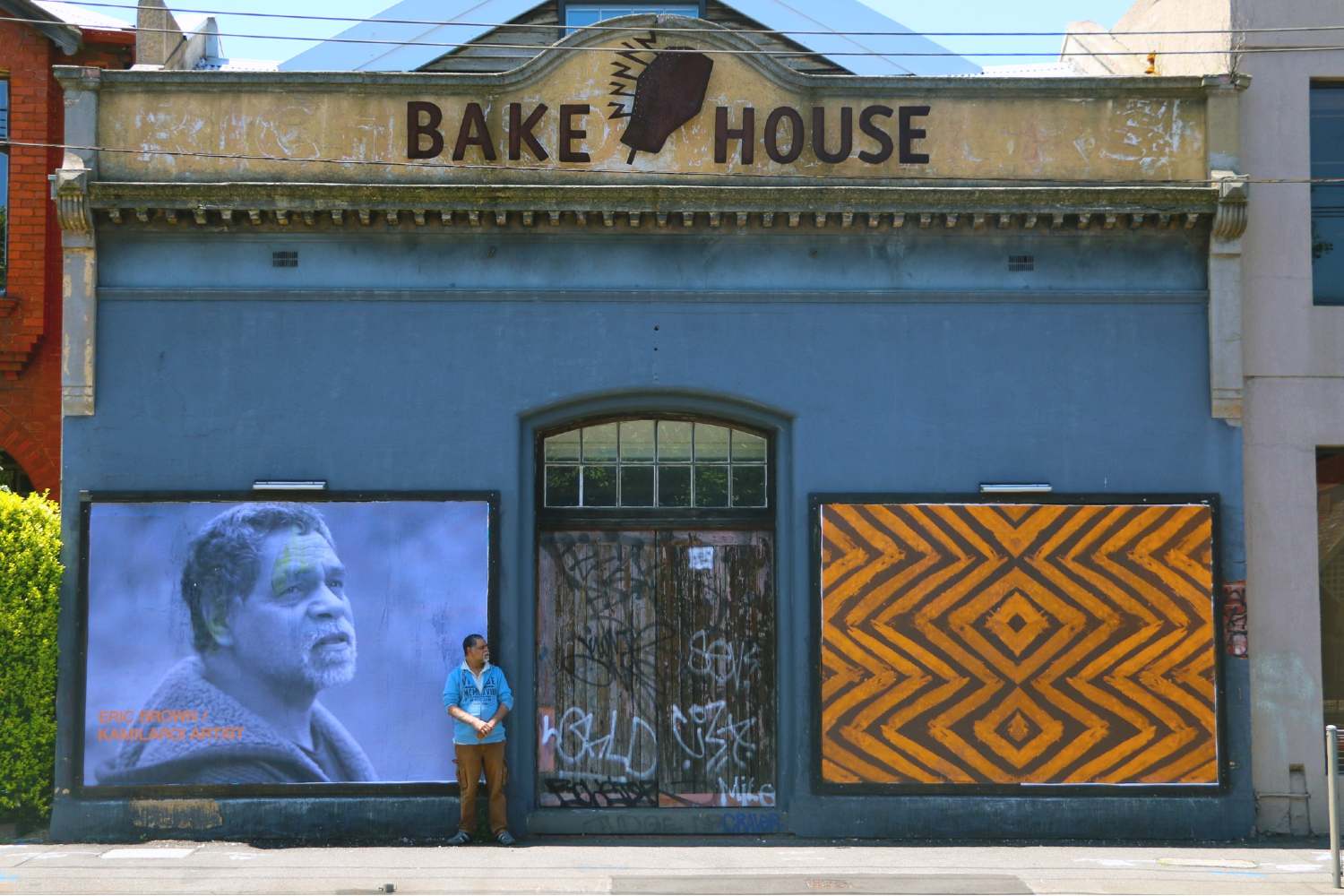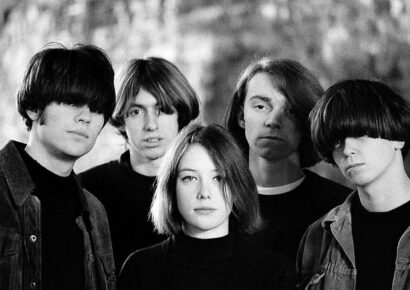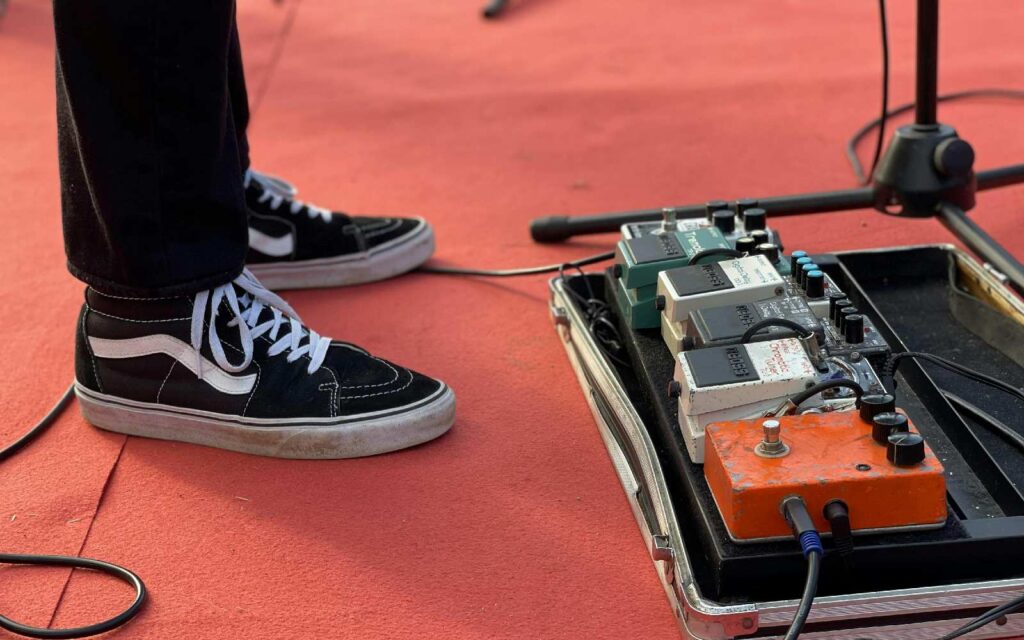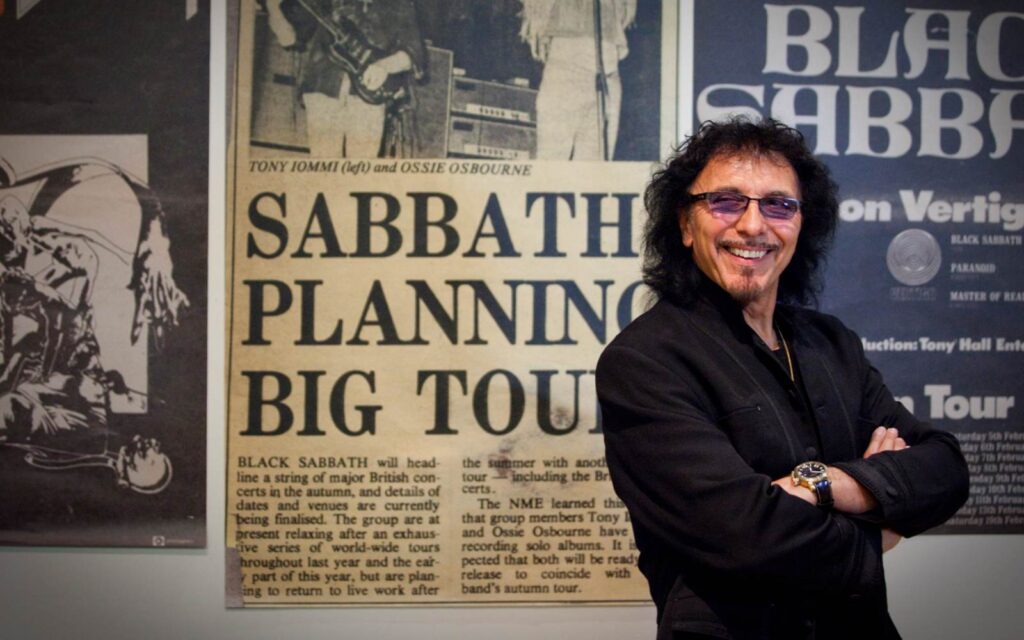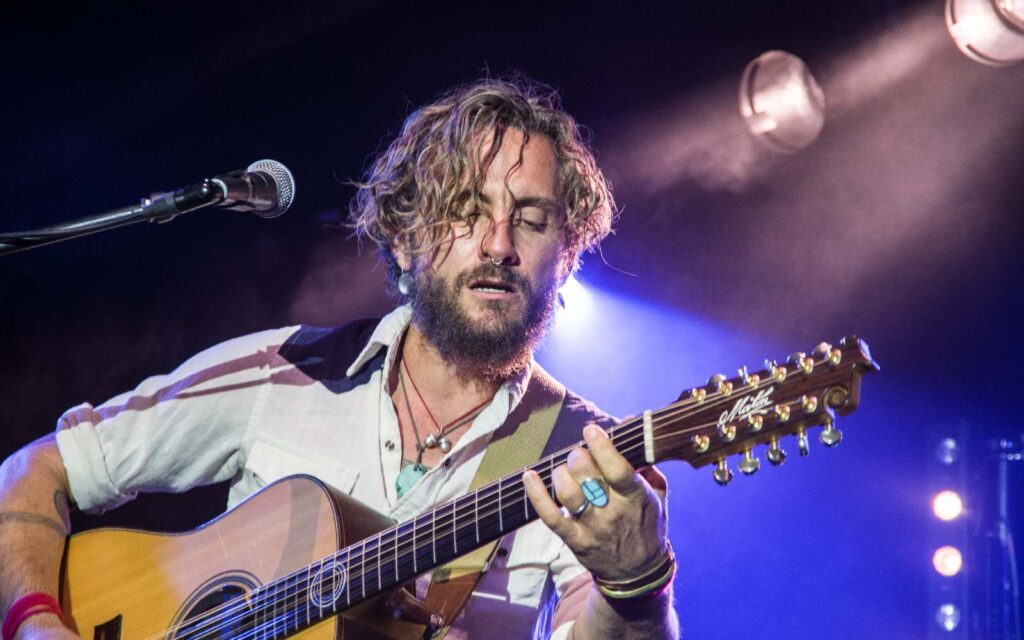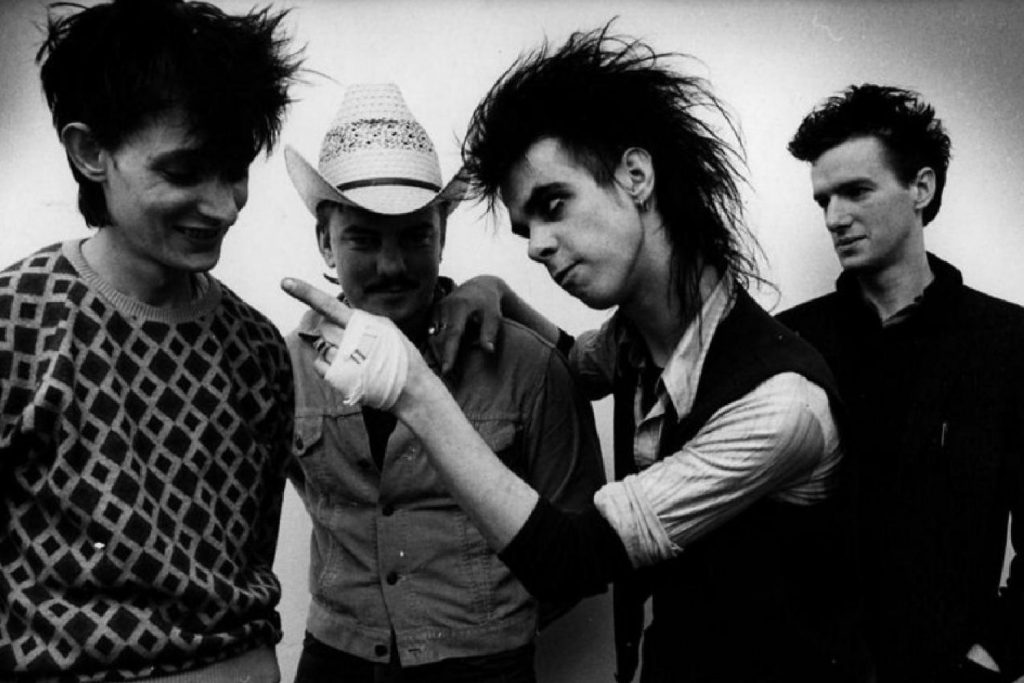A chat with Helen and Quincy, owners of the iconic institution that is Richmond’s Bakehouse Studios.
In honour of Mixdown’s studio special, we sat down with Helen and Quincy of the iconic institution that is Richmond’s Bakehouse Studios – a space for rehearsal, recording, filming and more – to chat illustrious patrons, the Melbourne music community, and the ins and outs of their beloved, eclectic space.
Read up on all the latest interviews here.
Being one of the most iconic fixtures attached to Melbourne’s rich live music culture, what are the most rewarding aspects of having built a community of artists whose creativity is fostered by your space?
I can’t remember who penned the quote, “if you love your work, you’ll never do a day’s work”, but this defines our days at Bakehouse. The challenges are there, but we are surrounded by music and have the unique position of being that ‘fly on the wall’ that is privy to moments of magic audiences don’t get to see. Thousands of artists have passed through over the last 32 years and many have become part of our extended fam.
Can you tell us a little bit about the history of the Richmond Bakehouse building?
The stables were built in the late 1800’s by the Walter’s family, settlers from Wales who ran removals via horse and cart between Victoria and NSW. The house was built in the 1920’s when the family expanded and married into the local Coppin family (of the famous Richmond Street). The factory was a later addition. In the 50s it was sold to the Sher Family, holocaust survivors and rag traders, hence the many old sewing machines and fabrics left behind by them. Later it was passed on to a local Vietnamese Consortium. In a way, the building’s ownership represents a snapshot of Australian migration since colonisation.
It was a squat for many years before Stable Sound set up in the mid 80’s. Our OG Bakehouse still stands in Bakehouse Lane, North Fitzroy and is one of the oldest continuously running recording studios in Australia – the original York Street Studios from 1978.
Your technicoloured rehearsal rooms have been graced by some seriously illustrious clientele over the years, from The Saints and Rowland S Howard to Courtney Barnett Missy Higgins, Olivia Newton John and more. Do you have any anecdotes or memories of the icons who have passed through the doors to share with our readers?
There are hundreds of stories from many artists, some of our faves are the famous first ever Australian gig for Ed Sheeran, where he and Michael Gudinski first locked eyes on each other. Talking politics with Billy Bragg, talking op-shopping with Cat Power, native plants with Kim Deal (Pixies), contemporary art chats with the Metal God – Rob Halford, gardening with Suzi Quatro, John Cale being so inspired by the creative energy of the place that he threw out his sheet music, Soprano Alison Bell, singing an aria where the world stood still just for a few minutes, Uncle Archie & Aunty Ruby Hunter with their kids and grandkids playing with ours in the courtyard, the first time we heard Dan Sultan sing, eavesdropping on the Dirty Three, joining friends and family of Paul Kelly to sing along to ‘How to make Gravy’ at Christmas…
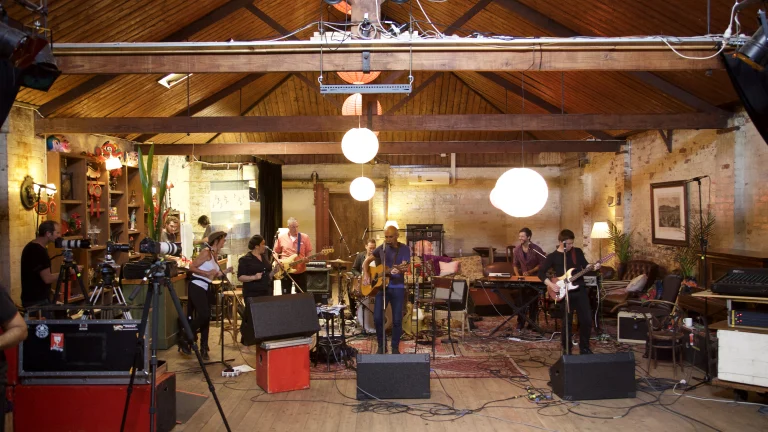
Paul Kelly at Bakehouse Studios
We would love to know a little bit about your spectacularly eclecticdecor – what goes into designing a room?
Bakehouse has been built from a strong ethos of re-use and repair. You won’t see any new furniture here, all items have been collected over years from the side of the road (where the streets are truly paved in gold!!) to op shops and family heirlooms that found their way here..
Quincy was originally a visual artist before he became a musician, he was inspired by Dadaism, where the refuse of the world can become a thing of art, function and beauty.
In 2014 we commissioned 10 local visual artists to create permanent immersive installations in the downstairs rooms where they would inspire a next generation of art and music making, the rooms are named after the artists; DeVille- after Julia de Ville (Vegan) Taxidermist, The Turner room by Mick Turner as a psychedelic homage to Luna Park, The Huxleys- Glam Rock Disaster room- inspired by their performance art band SOS (Style over Substance), Floyd room- by Emily Floyd, Gorilla Feminist Cake Icers -The Hotham Street Ladies room has had the Trompe L’oeil removed after the cake icing finally melted!
Any tips on sourcing out of the box decor?
In the music sector, our fellow Studiofiles often design spaces for an auditory experience and rightly so, the space needs to perform and be functional, you’ll see standard block coloured acoustic panels, concrete floors and occasionally a persian rug all suited to a clean aesthetic. Bakehouse has always been a place where ambiance matters as much as the tech gear, particularly as we create film sets and backdrops for artist content. Open green space is also key to what we do, our plants are propagated from cuttings and grown in thrown out vessels. Our shtick is used, old & beautiful (in our eyes!!), but this may not be for everyone and when setting up your own studio space, you may not want to commission an immersive artwork, it’s a big investment and it can dominate your space.
My biggest tip is be authentic in creating your space, love the space you create and fill it with objects that mean something to you. We’ve bucked trends as our aesthetic is generally not currently hip, so when finding affordable furniture. The op shops are always beckoning.
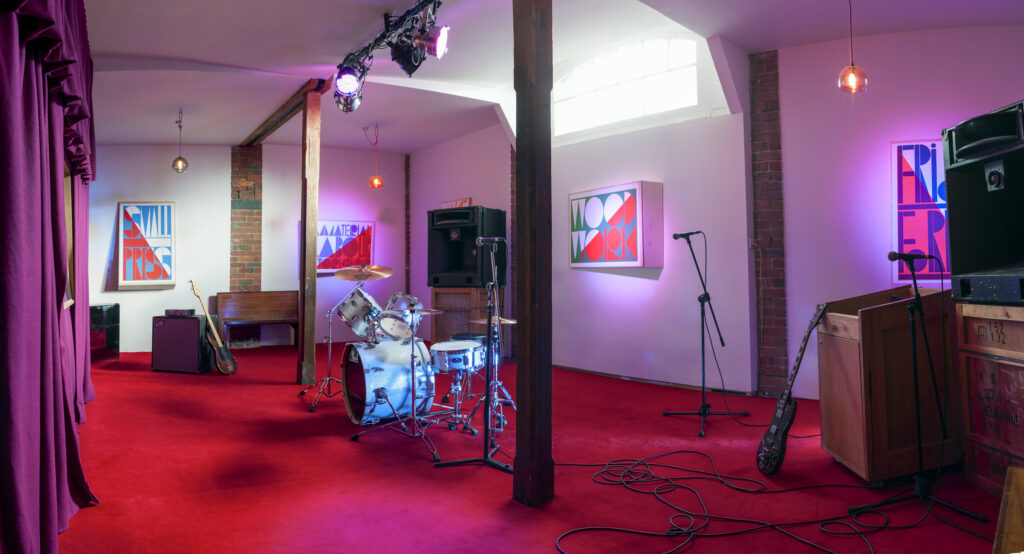
Lastly, which rooms are your favourites/are particularly significant to you?
Pre Covid, we hosted unforgettable events and shows including friend’s weddings, both our Dads’ memorials and concerts, listening parties, fashion catwalks, theatre and takeovers by the MSO, Red Stitch Theatre and the biggest New Year EVER by the Boon Companions.
All these happened in the Scrap Museum and Belfry, huge spaces with exposed brick walls and draped in rich green or black velvets with kitchens that look like they’ve been stopped in time (think Peaky Blinders or CWA), art deco bathrooms, grand pianos and lovingly collected objects.
I also love the Book Room by Spacecraft Studio. The whole vibe is remarkably calming with 2000 pulp fiction novels faced backwards in a large bookshelf, book spines are printed on calico wallpaper all exposed after you enter through a secret bookcase.
It has aged yellow hues like the colour of book pages and the smell of an old bookstore…
The two of you are aficionados of Melbourne’s punk rock heritage – the late 70s and early 80s are considered somewhat of a mythic era to the generations that have followed in its footsteps. What set our city’s first underground explosion apart?
To sum up the factors that lit the fuse on our city’s first underground explosion and do it any real justice would require an in-depth tome, many have tried.
Put simply, I believe that Community Radio has to be credited as the key defining factor that united and incubated passionate, like minded music lovers, initially from across the city and later from across the state and gave them connections, informing them of new movements in arts and culture. It’s serendipitous that 3RRR was granted its licence in 1976, the year that punk festered up through the floorboards of dive bars on three separate continents across the globe, so Melbourne was primed to become an incubator nurturing a garden of diverse dark cactus flowers, its own species of punk branching off into new strains of post punk.
New collaborations and connections busted out across the inner city, kids that couldn’t play picked up instruments and started forming bands, inner city pub rock venues became willing to give this new music a go because a demand was buzzing through the airwaves, but there was soon to be a Melbourne mecca.
St Kilda was once a flourishing seaside attraction for Victorian beachgoers, from the early 1800’s to the mid 1900’s various booms had brought prosperity and grand developments, some still standing like the Palais theatre, Luna Park and the George… an entertainment precinct with Earl’s Court The Venue, St Moritz ice skating rink, St Kilda baths, the Esplanade hotel etc.
By the mid 70’s St Kilda’s heyday had well and truly passed, many of its grand old buildings had fallen into disrepair, it was like a ghost town where the party was over but the desperadoes didn’t want to go home so it became a seedy red light district, where sailors from US naval ships went for shore leave (code for drinking, brawling and bawling), particularly on the lower Esplanade which had venues like Bojangles and Bananas that became a playground for Melbourne’s underworld.
Families didn’t go to St Kilda after dark, so it was the perfect setting for a bunch of kids who wore junk shop clothing, saw no commercial prospects and wanted cheap rent, venues were desperate for a new boost in revenue but I suspect they had no idea what they were in for.
The music was fast and loud, the kids were fast and loud they consumed fast and hard – everything from the shitty mandatory suppers that the Liquor Licensing department demanded for a venue to stay open past 10 pm, to the booze that flowed over the bars and the substances that were ingested in the back rooms – everything was fast and exciting.
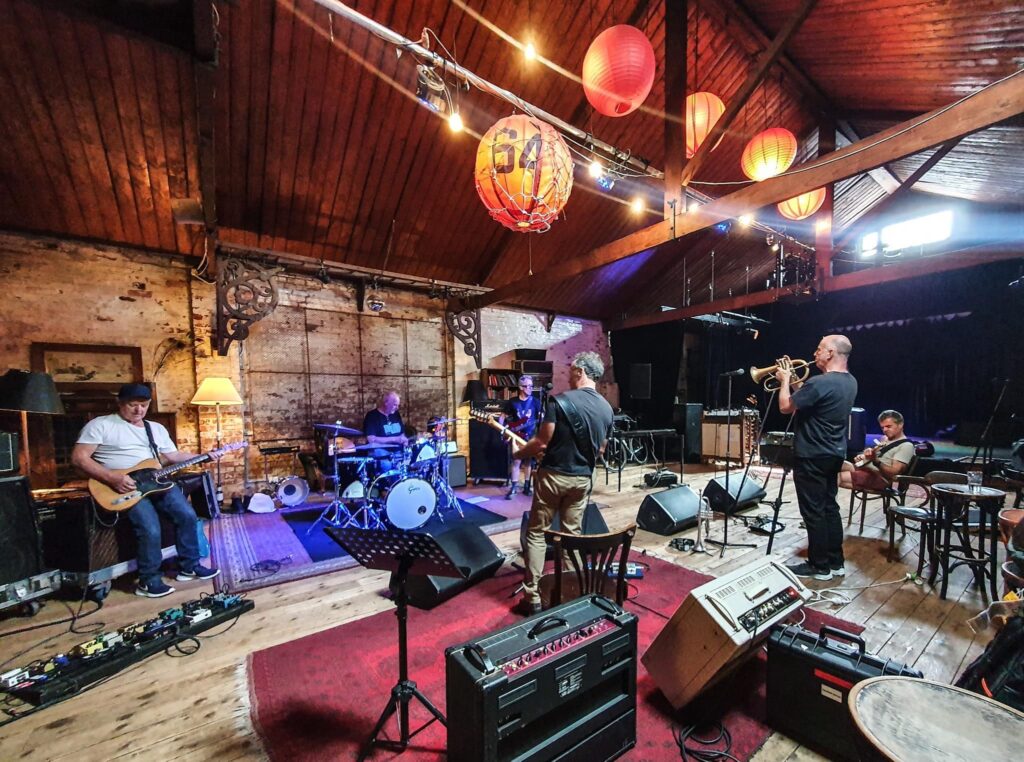
Could you describe the punk culture that set your hearts alight way back when?
Helen and I met here and we rode that roller coaster, it set a high standard, we often saw multiple bands a night up to seven nights a week, some great and many not so great but there was always an energy.
What we learnt at Melbourne’s punk university was that great music doesn’t necessarily have anything to do with money, commercial acceptance or fame, that art can be created from refuse, that the items that mainstream music consumers discard as redundant are often glistening with gems to be gleaned and repurposed, real artists can make art out of anything and of course necessity is the mother of invention.
We’ve subconsciously used these learnings as foundations for our ethos at Bakehouse
Having been involved in the Slam Rally, featured in ‘Persecution Blues – The Battle For The Tote’ and current sale of The Tote (arguably Melbourne’s most iconic grassroots venue), could you talk a little bit about the importance of underground live music institutions, and in turn, the changes in the Australian music industry you perceive to have contributed to their being in danger?
In 2010 we led the SLAM Rally to protest the vilification of the word ‘Music’ in policy aimed at curbing alcohol fuelled violence. Close to a decade later we were involved in a similar movement in NSW where ‘Music’ was the catalyst that triggered unfair govt policy targeting festivals.
Today, government intervention comes in the form of financial support, a far cry from the past.
Small venues, large venues, community radio, music studios all make up an ecosystem that is about as fragile as the environment we live in, since the blows of the pandemic, parts of the live music economy barely exist. Age-old problems of high land prices, residential encroachment and rising costs of business were always tough on venues, but in the world since Covid, they’ve pushed many over the edge. This may sound bleak, however there is always new and exciting music emerging from non traditional spaces, like Community halls, parks, backyards, warehouses & galleries.
At the centre of this ecosystem are the artists, we are interdependent on the artist’s health and stability, without the music creators, we cannot exist.
Re: The Tote, the owners of the Last Chance Rock Bar, have their hearts on their sleeves and will fight to save the Tote for the people of Victoria, a shining example of a grassroots campaign.
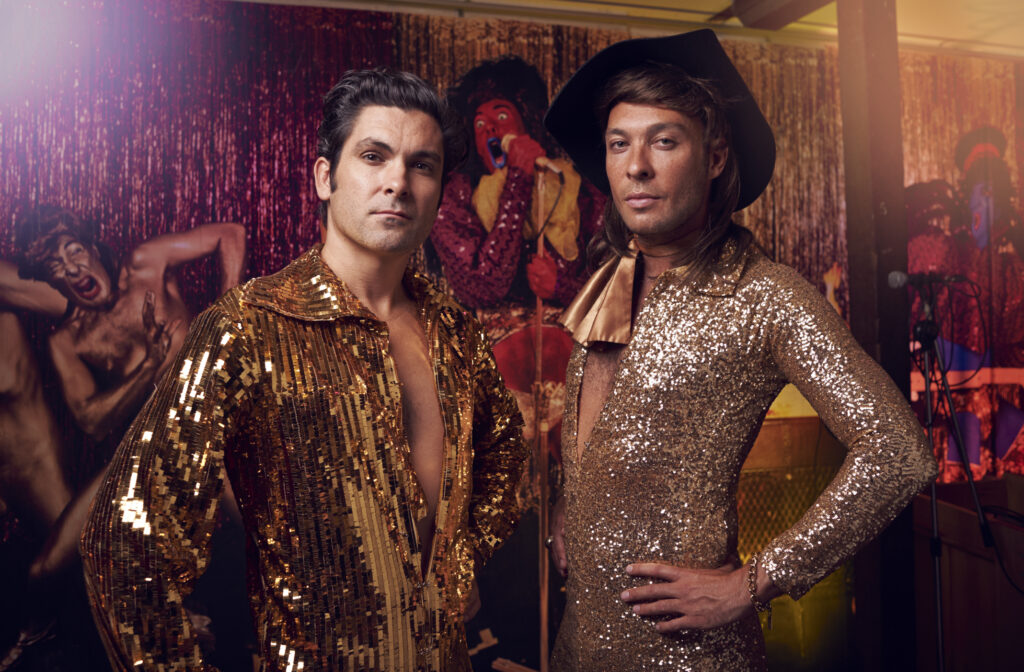
will and garrett glam from portraits for bake house arts project
Tell us a little bit about Bakehouse’s In House Studio facilities!
Rehearsal Spaces:
- 12 year old Yamaha C3 grand
- Old walnut Emil Aschenberg (Berlin made) Grand
- US made Cable (pianola style) upright
- Yamaha GC1 baby grand
- Gors and Kallmann upright
- Soundcraft desks
- DBX EQ
- Quest power amps
- Speakers including JBL, EV, Yamaha, Lorantz and Peak
- Quest FB and FOH
- Quest power amps
- DBX EQ
- Allen and Heath Zed 22FX consoles
- Shure SM 58’s as standard vocal mics
Recording Studio:
- a Toft mixing console
- Apollo 16 interface
- Ableton 11 Suite
- Yamaha GC1 baby grand
With the music industry’s constant (and these days rapid) evolution, where do you see Bakehouse headed in the future? What changes do you welcome, and what do you consider integral to keep constant?
We have shifted our focus as artist’s needs change, content creation underpins creative practice, so becoming a film and live stream location is now as important an offering as traditional rehearsal and recordings.
We have to evolve to not only stay relevant, but reflective of the community we live in.
In 2022 we introduced a bursary program for Women and gender diverse artists, This year we formally partnered with the Archie Roach Foundation and with the guidance of disability advocate Eliza Hull, we will work with the govt to retrofit the studio for accessibility needs.
We believe the participation of all artists is integral to an evolved music sector.
For more information about Bakehouse Studios, head to their website.
